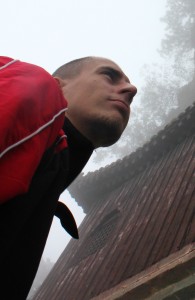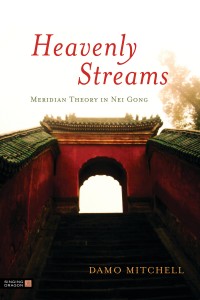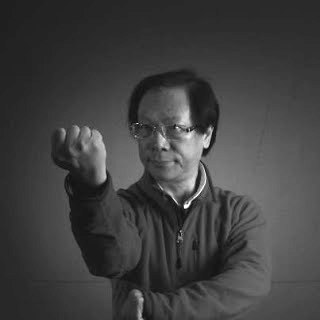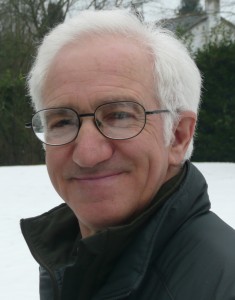 Anybody engaging with the internal practices of the Daoist tradition will no doubt encounter many difficulties along the way: many of the terms are written in metaphorical language, teachings are often contradictory and on top of that there is the crisis of faith often caused by the question, ‘is this experience real or is it my imagination?’ Even with the help of an experienced teacher there will be times when students will find themselves fumbling in the dark with practice yielding more questions than answers. These are challenges which any seeker of the way faces and it is the role of a concrete system of practice to help guide the practitioner through this darkness towards the state of conscious elevation which is the goal of all Daoist arts.
Anybody engaging with the internal practices of the Daoist tradition will no doubt encounter many difficulties along the way: many of the terms are written in metaphorical language, teachings are often contradictory and on top of that there is the crisis of faith often caused by the question, ‘is this experience real or is it my imagination?’ Even with the help of an experienced teacher there will be times when students will find themselves fumbling in the dark with practice yielding more questions than answers. These are challenges which any seeker of the way faces and it is the role of a concrete system of practice to help guide the practitioner through this darkness towards the state of conscious elevation which is the goal of all Daoist arts.
One aspect which can cause a great deal of confusion is around the meridian system. Is the idea of energetic pathways of Qi running through the body purely a conceptual framework or is it in fact an actual part of the human body-system? Whilst some may accept the concept of meridian pathways purely on faith others will disregard it on the basis that they have been brought up in a science-based society where logic prevails. In my opinion both of these stances have their own limitations. I have always sat somewhere in the middle; I am ready to accept that which has been a part of an unbroken lineage for millennia but I am also prone to retaining an element of doubt until proven through my own experience. It was this position I took when considering the meridian system.
I originally studied the meridian pathways in the conventional manner. As part of the Tui Na massage training I undertook alongside my martial arts training, I read textbooks on Chinese medicine and was guided towards locating the various points of the meridian system by my teachers. In this way I developed a working, theoretical understanding of the meridian pathways which I was utilising daily in my practice of Chinese medicine, Qi Gong and the martial arts. It was not until I was introduced to the Heavenly Streams practice of connecting with the meridian system and sending my awareness along their length that I began to understand with no doubt whatsoever that the meridians existed. Through learning how to breathe in a certain way and direct my attention to specific ‘entrance’ points on the meridians I learnt to ‘retune’ the frequency of my mind. Like a radio switching between stations I was able to use the points to translate the energetic realm for me bringing the flows of Qi into the realm of direct experience. Now these pathways I had studied for so long could tangibly be felt. I experienced the flow of information along their length and began to feel the comparative differences between the different channels. I encountered blockages of different types along their length and found that I could move them through focused concentration; as a result I learnt how clearing these blockages had a knock on effect to the physical realm of my body and my health improved.
 Further exploration led me to understand how various body functions could be controlled through these points, for example one point in particular started me sweating as soon as I put my mind onto it. I did not increase in body temperature but rather just felt as though the pores opened allowing fluid to escape them. Other points allowed me to change my body temperature, energy levels and even my mind-set; I had connected with and learnt how to interface with the energetic ‘control panel’ of my body. Over the years I have learnt to refine this until I am able to adjust the various functions of my body to help me rid myself of illness when in the early stages, change my mind if my moods are working against me or even to prepare my body for internal training. Progression has even enabled me to now see the meridian pathways during my practice; the information of the Qi being connected with is translated visually by my mind and through this ‘inner vision’ I am able to observe the various fluctuations of Qi taking place within my energy body.
Further exploration led me to understand how various body functions could be controlled through these points, for example one point in particular started me sweating as soon as I put my mind onto it. I did not increase in body temperature but rather just felt as though the pores opened allowing fluid to escape them. Other points allowed me to change my body temperature, energy levels and even my mind-set; I had connected with and learnt how to interface with the energetic ‘control panel’ of my body. Over the years I have learnt to refine this until I am able to adjust the various functions of my body to help me rid myself of illness when in the early stages, change my mind if my moods are working against me or even to prepare my body for internal training. Progression has even enabled me to now see the meridian pathways during my practice; the information of the Qi being connected with is translated visually by my mind and through this ‘inner vision’ I am able to observe the various fluctuations of Qi taking place within my energy body.
When teaching, I encourage students to engage in the same practices. Through periods of sitting and connecting through the same entrance points I have taught my students to connect with their own meridian pathways. It is always rewarding to see the face of a student who, for the first time, feels their own energy body; especially if this is a student who has already worked on a purely theoretical level with the meridian pathways up until this point.
There are numerous benefits to experiencing your own meridian pathways. For those interested in improving their own health it is possible to change the very ‘energetic blueprints’ of your own body-system. Great insight into how your body functions and what causes it to move out of balance can be had from exploring the flows of Qi through your own body.
For Qi Gong or Nei Gong practitioners it is very important to feel your own meridian pathways once you wish to move beyond the earliest stages of development. Trying to work with your own Qi without being able to feel where it is flowing is like trying to find your way through the darkness without a light. I believe that many of the problems people have caused themselves through incorrect Qi Gong training could have been avoided if people had taken the time to learn to feel their own Qi flow before going too deep into their training. Any health problems from incorrect training can clearly be felt developing within the energy body long before they manifest as a physical or psychological imbalance. I was taught that students of the Daoist tradition would originally have spent much time studying the energy body before they moved past even the most preliminary of breathing exercises; these studies would have focused largely on experiential feeling of the meridian pathways supported by theoretical teachings and charts.
Perhaps some of the greatest benefits of connecting with your own meridian system can be had by those practicing Chinese medicine modalities such as Shiatsu, Tui Na or acupuncture. Is it possible to accurately treat somebody’s energetic imbalance if you have not experienced this Qi flow for yourself? It is possible to learn every function of every point in the body by memorising lists and developing a theoretical understanding but this should be secondary to actually experiencing what happens when the individual points are stimulated. It is my opinion that experiential understanding of the meridian points and pathways needs to be an integral part of any sincere Chinese medicine practitioners training.
 The meridian system is the energetic connection between the energies of Heaven and Earth; it sits at the point between the physical world and the realm of pure consciousness. It is the pivot of human creation, development and eventual demise. In life we begin to learn about the physical body as soon as we are born. We learn how we can control this vessel we find ourselves within and through this vessel we explore our connection to the physical world. What we are not often encouraged to do is to explore the nature of our inner world, the world of our energy body and for this reason our minds are no longer able to ‘tune into’ the realm of Qi. Thankfully this is an issue easily remedied.
The meridian system is the energetic connection between the energies of Heaven and Earth; it sits at the point between the physical world and the realm of pure consciousness. It is the pivot of human creation, development and eventual demise. In life we begin to learn about the physical body as soon as we are born. We learn how we can control this vessel we find ourselves within and through this vessel we explore our connection to the physical world. What we are not often encouraged to do is to explore the nature of our inner world, the world of our energy body and for this reason our minds are no longer able to ‘tune into’ the realm of Qi. Thankfully this is an issue easily remedied.
As a general rule of thumb I believe that a fairly high level of energetic connection is attainable within a year of daily practice. Obviously this length of time will vary from person to person but a year’s practice is what I have seen from teaching my own students. Over the first few weeks a student can begin to feel the easier parts of the meridian pathways which are generally the lengths of Qi flow on the forearms, fingers, lower legs and toes. From here it seems to take around a year of daily practice for the whole energy body to open up to your awareness. From here it is possible to use this foundation of feeling the meridians to be able to scan their length for imbalances and change their nature through controlled use of the body’s meridian points. The key is to progress steadily and slowly; do not rush anything. Take your time, persevere and most importantly: have fun with the process.
Damo Mitchell has studied the martial, medical and spiritual arts of Asia since the age of four. His studies have taken him across the planet in search of authentic masters. He is the technical director of the Lotus Nei Gong School of Daoist Arts, and teaches Nei Gong in the UK, Sweden and the USA. He is the author of Daoist Nei Gong: The Philosophical Art of Change, and Heavenly Streams: Meridian Theory in Nei Gong, published by Singing Dragon.
© 2013 Singing Dragon blog. All Rights Reserved

